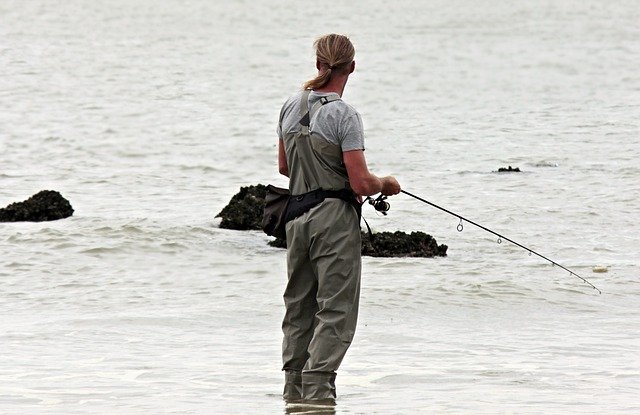
Fishing can be complicated for a newbie. But no matter how difficult it seems, you can catch your first fish on day one. The only thing you need to do is get the right gear and follow the guide of pro anglers. You can turn a boring weekend to an eye-opening and exciting one by starting your fishing adventure.
So, if you’ve been admiring anglers and wishes to try, this beginner’s guide to fishing is for you. You’ll find all the information for your first fishing experience here.
Let’s dig into it!
1. Get your fishing license
You may be reading this for the first time, but it’s true. Before fishing in any State, you’re supposed to get the appropriate license that permits you to catch fishes in their waters. The good news is that the licenses can be short-term or long term. You can buy for one day or for a whole year if you’re a resident of that State. Another good thing for you is that you can buy the licenses online, or you can visit a local fishing shop.
2. Choose the best local spot
You can fish everywhere and expect to catch your first fish. You must investigate a little to get the right spot. It may be easier to ask local anglers about it, or you can a fishing app to access all the vital information about local spots.
3. Learn all the fishing etiquette and follow them
There are some basic rules or simple etiquette that you must uphold as an upcoming angler. It’s like a code amongst others, and as you join, try hard to learn and uphold them. For instance, you must respect the spot which another angler has found and avoid it. Another interesting etiquette is that you should always keep the number of fishes you can eat and no more. Also, remember to comply with the leave-no-trace rules that govern outdoor usage.
4. Buy the best and right fishing gear
As someone starting for the first time, the best gear to get is the spinning reel and the rod combo, as you can find in https://nativecompass.com/best-spinning-reel-reviews/. You’ll get the best combo and also brands that offer easy setup. Visit a local shop such as and ask for the right one to use. Once you’ve bought the combo, get the bait, and the lures. You’ll also need to buy the bobbers, rubber net, needle-nose pliers, and a tackle box.
5. Learn how to tie the knots
After gathering the important gears as we’ve noted above, you’ll need to learn some knot-tying skills. There are many types of knots that anglers tie. But the basics ones that you must learn now are the clinch, Palomar, and the surgeon’s knot. The clinch knot connects your lure or hooks to the line. The Palomar knot also does the same, and it’s stronger and easier to tie. The surgeon’s knot connects two lines for cases of emergencies, such as when your lure is snagged.
6. Learn to read the water
You can’t cast your bait anyhow or on any spot without knowing the right place where you will get a good result. For instance, if you’re going to fish in a lake, move closer to the shore where there are weeds or downed trees. But if you want to fish in the river, target the areas where there are adequate shades. Those are the places where fishes hide.
7. Get your casting right
Fishing is fun, but it also requires some techniques. For instance, you can’t be careless with your casting if you want to catch a fish. Your spinning reel uses what anglers call a bail to keep the line in the spool. So, if you want to cast, flip the bail and hold your line with a finger. Then, lift the tip of the rod and take it a little behind and cast forward with your wrist & elbow. As your rod goes vertical or slightly forward, release your line to allow the lure to fly. As the lure enters the water, flip the thin wire/bail back and start reeling.
8. Don’t flunk the hooking
You must know how to hook the fish, or it may spit out the lure or your line breaks under its weight. So, ensure that you master the skill in setting the hook into the mouth of the big fish as it bites your bait or lure. All you need here is the perfect timing and pressure. Your cue will be as soon the bobber jerks or sinks, point the tip of the rod up, and pull it back. Apply moderate pressure to ensure that you don’t remove the lure.
9. Keep your net handy for landing the fish
Don’t forget to keep your net nearby for the fish. As soon as you bring the fish closer to your feet, bend down and scoop it with the net. Prevent any impact with the rocks or squeezing the stomach or the gills. If your plan is to put it back into the water, don’t wait too long.
Conclusion
Fishing is one of those relaxing and exciting pastimes. Great men and women do it whenever they need calm. Some people, however, fish as a source of food. Whatsoever reason you have, you can nail it once wit this guide.
Tags: recreation


